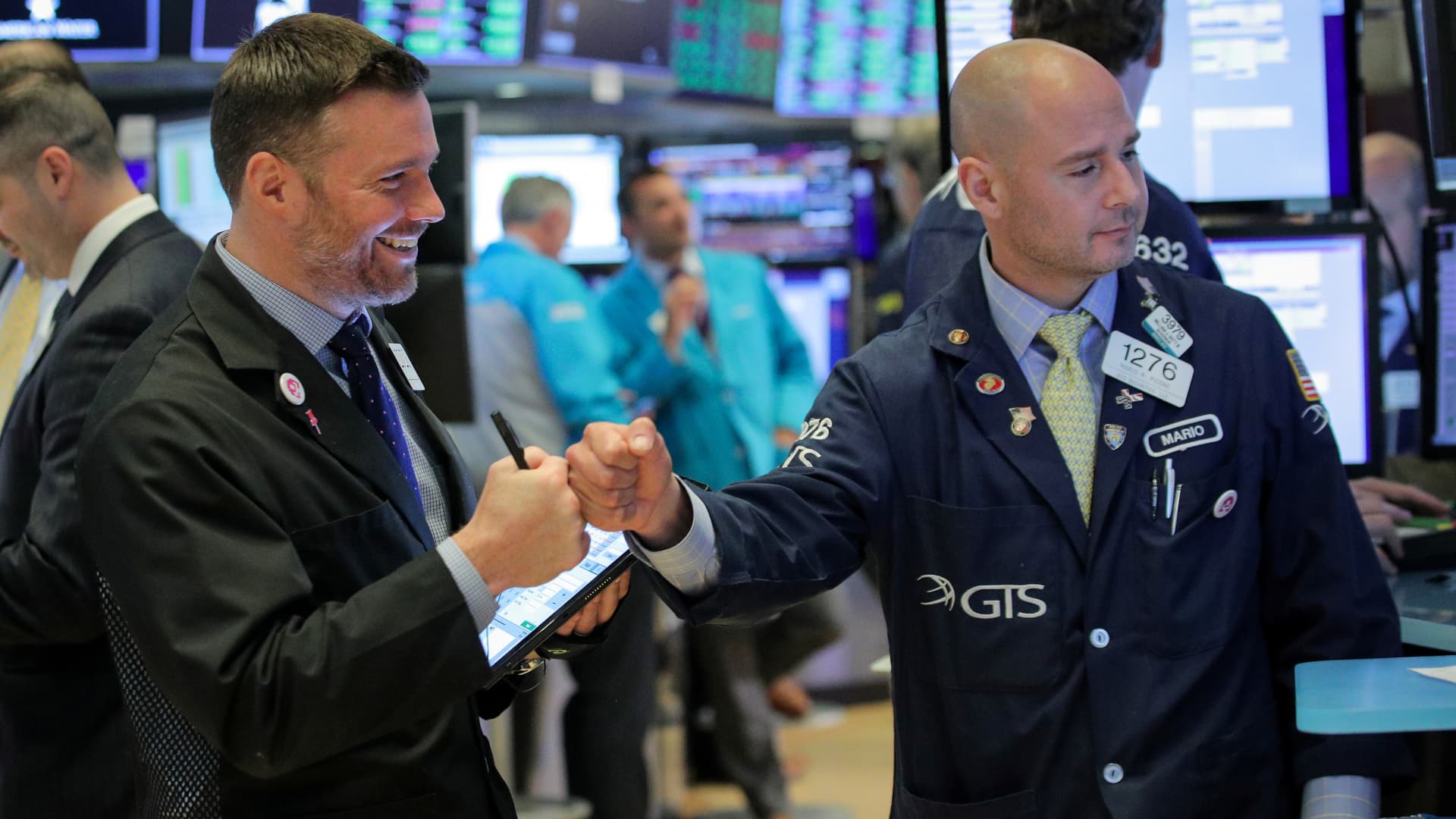
Traders work on the floor at the New York Stock Exchange (NYSE) in New York City, U.S., January 19, 2024.
Brendan Mcdermid | Reuters
The stock market keeps scaling new heights as investors focus on the good and ignore the bad, no matter how bad the bad parts might look sometimes.
Prospects for a slowing economy, geopolitical unrest and turmoil in Washington aren’t scaring market participants largely because none of those threats have turned into much in reality.
What instead has taken center stage is an economy performing remarkably well, inflation pulling back and a run of positive developments in Big Tech that has outweighed any what-ifs that the market has had to endure.
“If investors are looking for a reason to be negative, it’s hard to find,” said Mitchell Goldberg, president of ClientFirst Strategy, a financial advisory firm. “The 24-hour news cycle is so intense. But the fact is, a lot of it is noise and a lot of it has nothing to do with economics and personal finance. There’s so much information overload now. But to break it down and put perspective on things, what’s not to like about the stats that are coming up?”
As it has digested the various headwinds and tail winds, the market is pushing toward a record closing high. In fact, the S&P 500 breached its intraday peak Friday, continuing the momentum built through the end of 2023.
Large technology players have led the charge. Juniper Networks, Nvidia and Advanced Micro Devices are the three biggest sector gainers this year on the S&P 500, buoyed in part by enthusiasm over generative artificial intelligence technology.
Solid economy provides a boost
At the same time, economic data outside of manufacturing and housing has been mostly solid, particularly where it concerns the seemingly unbreakable labor market. With expectations running high that elevated interest rates pose a threat to continued hiring growth, initial jobless claims last week hit their lowest level since September 2022.
Along with commentary from multiple Fed officials, the tight labor market has taken some of the steam of out the market’s anticipation for rate cuts this year.
Where the market a week ago was nearly certain the Fed would start cutting in March and keep going with six more quarter percentage point moves this year, pricing shifted Friday. Traders in the fed funds futures market now think there’s less than a 50% chance of a March cut and now see a greater likelihood of five reductions this year, according to CME Group data.
But markets stayed positive even with the dimmed outlook for policy easing.
“As far as the Fed raising rates, this has been borne out that as long as the rate hikes don’t cause something to break” the market is fine, Goldberg said. “I don’t really see anything breaking. There’s no subprime debt crisis, I don’t see a mortgage crisis. … There have been a lot of big, bold predictions, and one by one they don’t happen, or they just push them out to the next year.”
Withstanding rate hikes
Indeed, the market has behaved well since the Fed started hiking rates — 11 times worth 5.25 percentage points in the most aggressive cycle going back to the early 1980s. Since the first increase on March 17, 2022, the S&P 500 has gained more than 8%. Since the last hike on July 27, 2023, the large-cap index has risen more than 5.5%.
Now the market is anticipating, with perhaps a little less fervor, that the Fed is going to start cutting.
Investors are “bullishly skating to where the puck is going,” meaning a lower fed funds rate, Bank of America investment strategist Michael Hartnett said in a client note Thursday.
Combining a tough economy with a more accommodating Fed and an outperforming tech sector is adding up to a winning formula.
“The big seven names [in tech] have become like a chimera. They appeal to two very different economic backdrops,” said Quincy Krosby, chief global strategist at LPL Financial. “One is we’re out of fear that the economy is slowing dramatically. The other is they’re specific catalysts for AI because the market has been focused on the business development with mega-tech and business innovation for generative AI. And now what you’re seeing and what companies are reporting is the monetization of that.”
Krosby specifically cited standout earnings from Taiwan Semiconductor as a bellwether for the sector and the promise that disruptive technology holds. “That is something that the market has been waiting for,” she said.
Then there’s the economy.
With the labor market withstanding inflationary pressures and higher rates, that opens the door for more consumer strength this year. Consumer sentiment hit its most optimistic level since July 2021, according to a University of Michigan survey released Friday.
“You’re always looking for your first signals towards for a recession. They come right out of the labor market. What you see is that the underpinnings of the economy helps maintain consumer spending, which is 70% of the economy,” Krosby said. “That’s a backdrop that the market appreciates.”
Don’t miss these stories from CNBC PRO:
